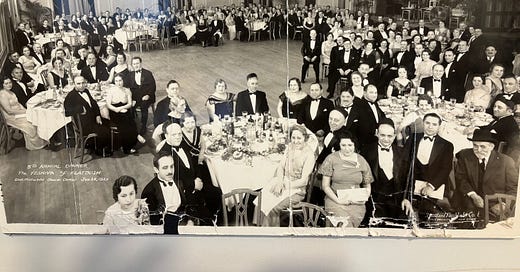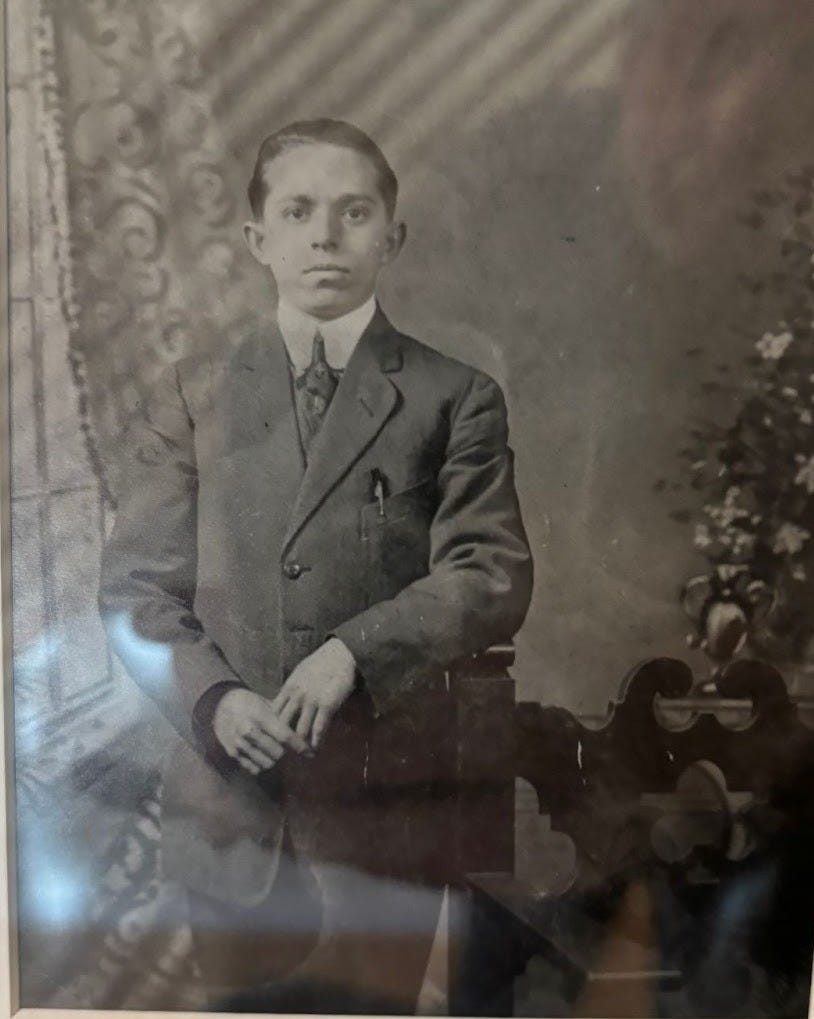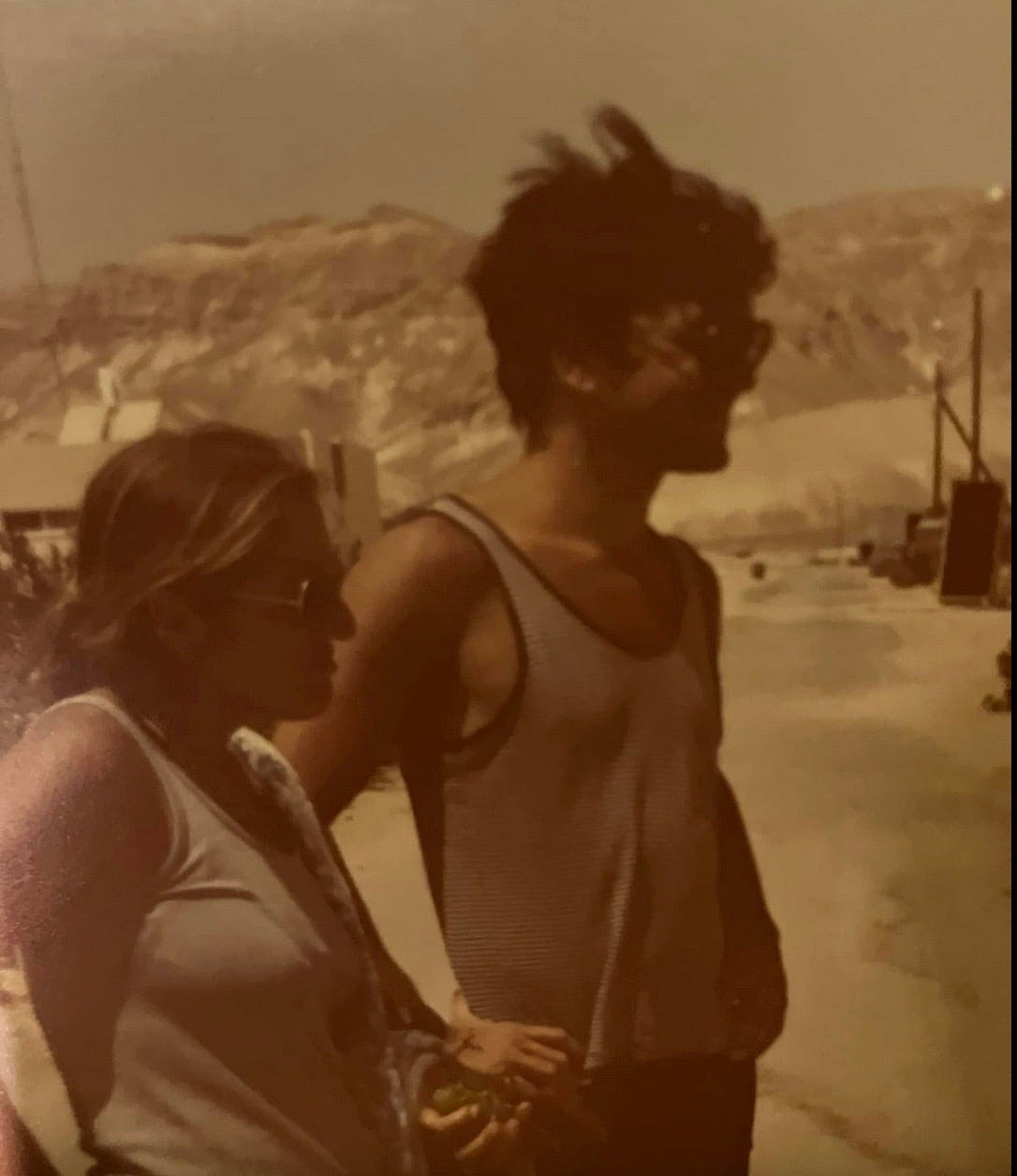Chapter 174: Frozen Moments, Speaking Volumes
Almost all of the leading characters in my book are dead. Among them is the central figure, my friend, Jonnie Maximon, who died 40 years ago. His parents are gone, as are mine. So too is my grandfather who, like Jonnie’s grandfather, plays an important role in the story I want to tell.
Jonnie left behind letters, many to me when we were still teenagers, and many more to his parents and brother when he was older and we had drifted apart. His grandfather was a writer whose legacy includes scores of essays, as well as letters to his son, his daughter, his mentor, and the people who would one day break his heart.
My grandfather left nothing in writing; he was, in my mother’s telling, embarrassed by his European-looking penmanship. I suspect his reluctance to write had more to do with his formal education in his Eastern European village having ended when he was 12 and was limited to his learning to read prayers in Hebrew.
My grandfather left a different legacy, and it is one that I am finding invaluable in filling in the blank spaces in his story. Documents I’ve found at Ancestry.com tell part of that story, as do my memories and the stories my mother told. (My mother, however, was an unreliable narrator, given that she worshiped him and wanted me, my siblings and our cousins to worship him, too.)
My grandfather left photographs. More precisely, he appears in photographs, taken over the decades, each of them capturing a frozen moment in his life. These moments are helping me find him. And they, in turn, have helped me see in the photos I have of Jonnie and his family, a dimension to their stories that transcends their words.
These are not works of photographic excellence, taken by a skilled photographer with an eye for character, scene, and action. They are mostly snapshots; those shot professionally were taken at formal gatherings by photographers presumably standing on a ladder saying, One-two-three everyone smile. Nothing happens. And yet, I have learned that if I spend enough time looking again and again and again, much that I had overlooked appears as if I am seeing the moment with fresh eyes.
I’ve hung several on my office wall. I pull my chair close and stare. I begin to notice things.
This one was taken in Brooklyn and it is unexceptional; nothing to see here. But in the lower left hand corner is the date, location and description of the event: 5th Annual Dinner/The Yeshiva of Flatbush/East Midwood Jewish Center/Jan. 22, 1933. My grandparents are sitting together at the table in front (they are the plump couple just to the right of the man in the tall black skullcap). I zoom in on the table to see what they are eating: a starter of half a pineapple. There are instruments on the stage, suggesting there has been dancing and the band is on a break for dinner. The flag hanging limply in the far right hand corner resembles what will in fifteen years become the flag of the State of Israel. Not that the men and women in this room are ardent Zionists, at least not yet.
They are, like my grandparents, mostly immigrants. They are celebrating the founding of the school my parents attended and to which one day I and my siblings would be remanded; yes, it felt like prison to underachieving me.
I note the date and check the weather: a cold, rainy night. The year stands out – 1933. America is in the depths of the Great Depression; Franklin Roosevelt will not take office until March. Yet everyone in this room is in formal wear.
My grandfather is 37 and my grandmother four years younger. My grandfather has been in America since 1912 and has made enough of a success of himself to afford to send his three children to the five-year-old Yeshiva of Flatbush whose promise is two-fold: half day spent in secular studies to prepare children for success in America; and the other half in religious education to ensure that they remain faithful Jews.
The school. The promise. The celebration. The date and attire. And one more thing: the location – the Jewish center at whose own school I would meet Jonnie 30 years later when my parents mercifully pulled us out of the yeshiva my grandfather had believed represented the pathway to the good and religious life for his children.
This photograph is telling me so much, and it is doing so slowly, an image and with it, an insight at a time. I have another photograph of my grandfather but it tells me too little, and that sends me off reporting. I do not know the year it was taken, his age at the time, where it was taken, and why. Was it to send to someone, perhaps the sister who remained behind in Europe? It appears to have been taken in a photographer’s studio. I hope the cut of the suit can place the moment in time. I contact the Fashion Institute of Technology to see if someone on the faculty can tell me when such a suit might have been fashionable. How much would it have cost? How did he afford it, to say nothing of the photographer’s fee?
I see only a young man who in his bearing, his choice of clothing, and the setting for the photograph wishes to convey success. But so much is left to be learned.
When I first discovered that I had kept Jonnie’s letters I was overcome in reading them by the memory of his voice; it was as if in these letters, written so long ago, he was once again talking to me. But the letters only made me eager to learn more. I had a few photographs of him: one taken of the two of us together on a visit to Israel and the desert kibbutz he had helped found and where he was living with his wife and infant daughter.
That daughter, Moriyah, is now 40 and so much wants to know about the father she lost before she could ever get to know him, and who remains, as she put it with her poet’s sensibility, like a fog.
“Have I ever missed you?” she once wrote. “Nope.
“Have you ever mourned the fact that you're gone?
“Every single day.”
As it happens I was on Facebook the other day – I look only when I get an alert saying I have a new post from someone close to me. Moriyah had posted a photograph of herself at the grave of her husband, who had died a year ago. I began scrolling through the photos on her page. There were photos of her and her husband, her young sons, her mother, her friends, her step siblings. Interspersed among them were photos of Jonnie.
I had seen several of them before – mostly in the memorial book his father had compiled after his death. But then came one I’d never seen: Jonnie and his wife, Aliza, who appeared to be pregnant.
They are in their desert home; they’re both wearing sunglasses and are caught in profile, oblivious to the camera. Jonnie is smiling. Jonnie was not given to smiling and so whatever it was he was seeing or hearing had pleased him. It must have been a windy day because his hair is blowing. It must have been especially hot because he is wearing a tank top. The photo stopped me. Even as nothing appears to be happening so much feels as if it is going on.
I need to know more. When was it taken? Does Aliza remember the moment? Was Moriyah due soon? What was their life like at this moment in time?
Jonnie is 30. He is about to become a father. He has built a home, a place in the world, literally with his own hands. He will be dead in a year.
I am looking at this photograph of my friend and it is telling me things. I am a journalist and so not inclined to guess or assume what that is.
The photograph is sending me on my way.
***
We’ll be off next week. Back on March 28th
* * *
If you have a question, a problem in your work, if you are feeling lost, stuck, confused, at sea, searching, grappling, or baffled, email me at Michaelshapiro808@gmail.com and tell me what you’re confronting and what help you need.
It is seldom, if ever, the case that one student’s problem or question is their’s alone.
Please indicate if you want to remain anonymous, have your name or just first name included. I will include the question and then answer it as best I can.
* * *
Nothing good ever came from writers punishing themselves. We know writing is hard. We’re here to show that it doesn’t have to be torture





